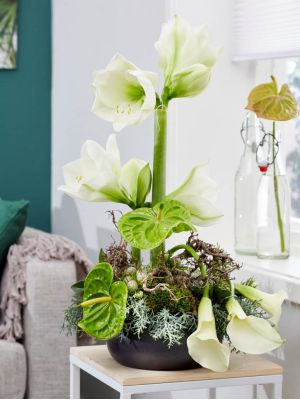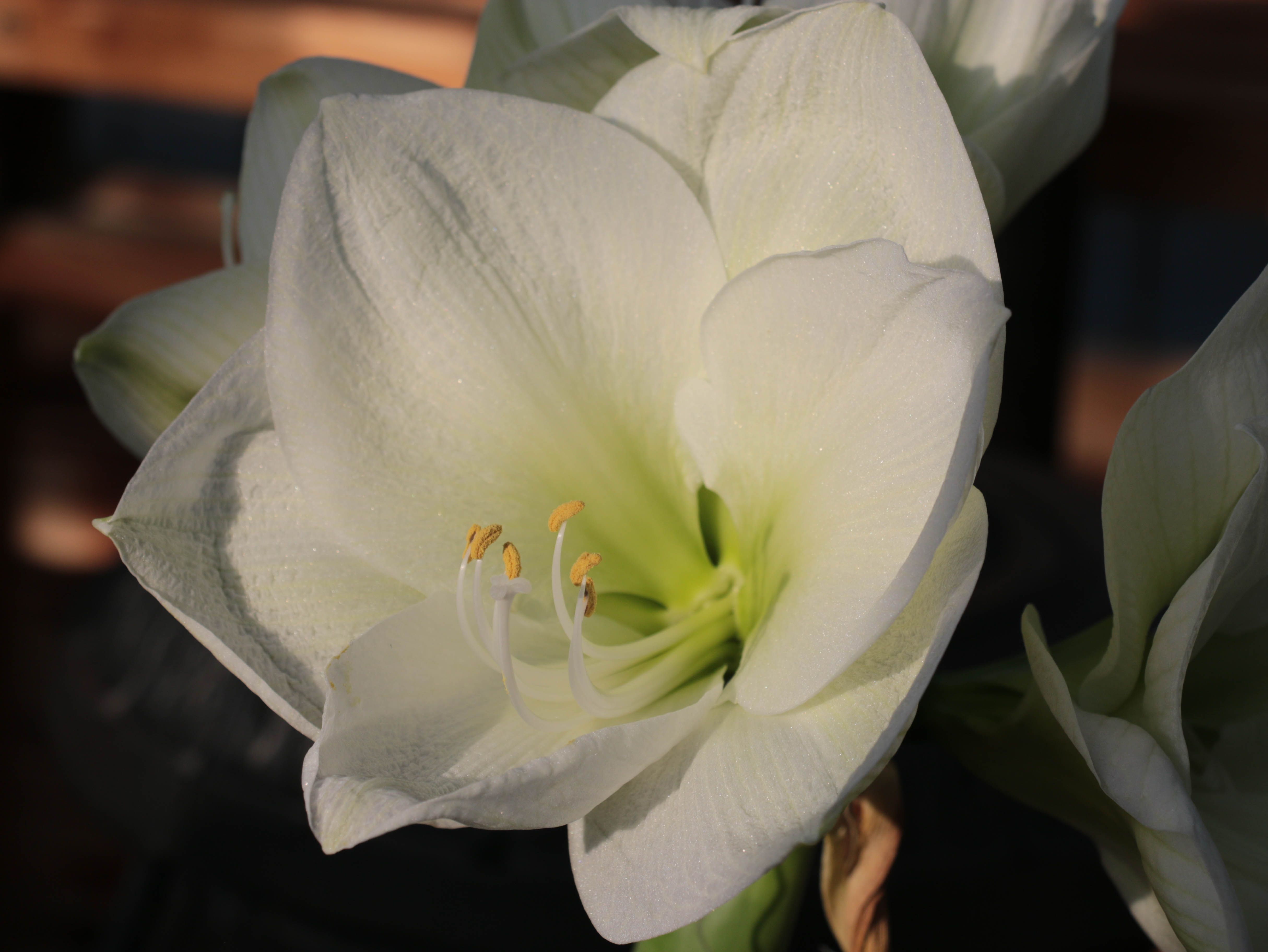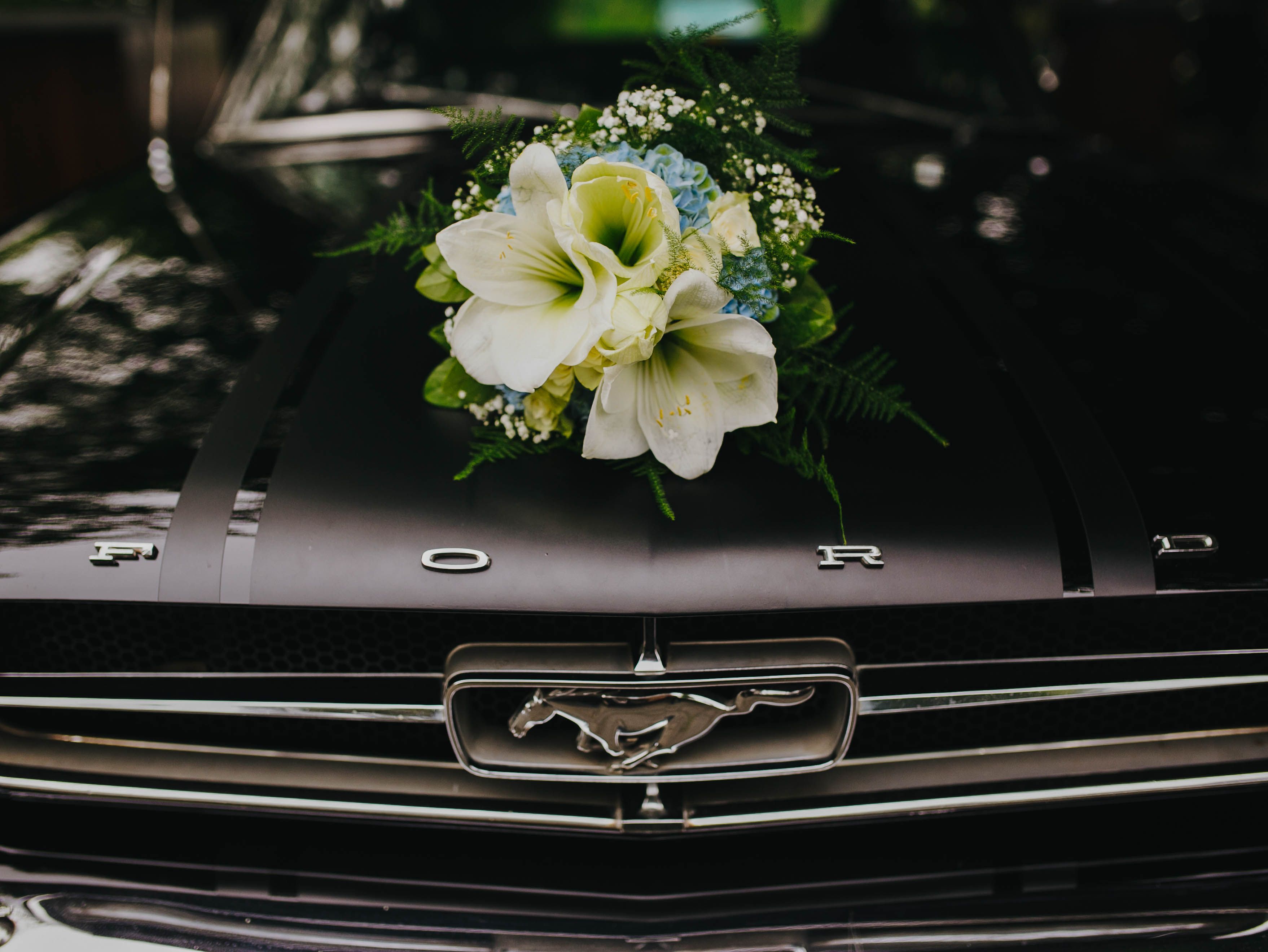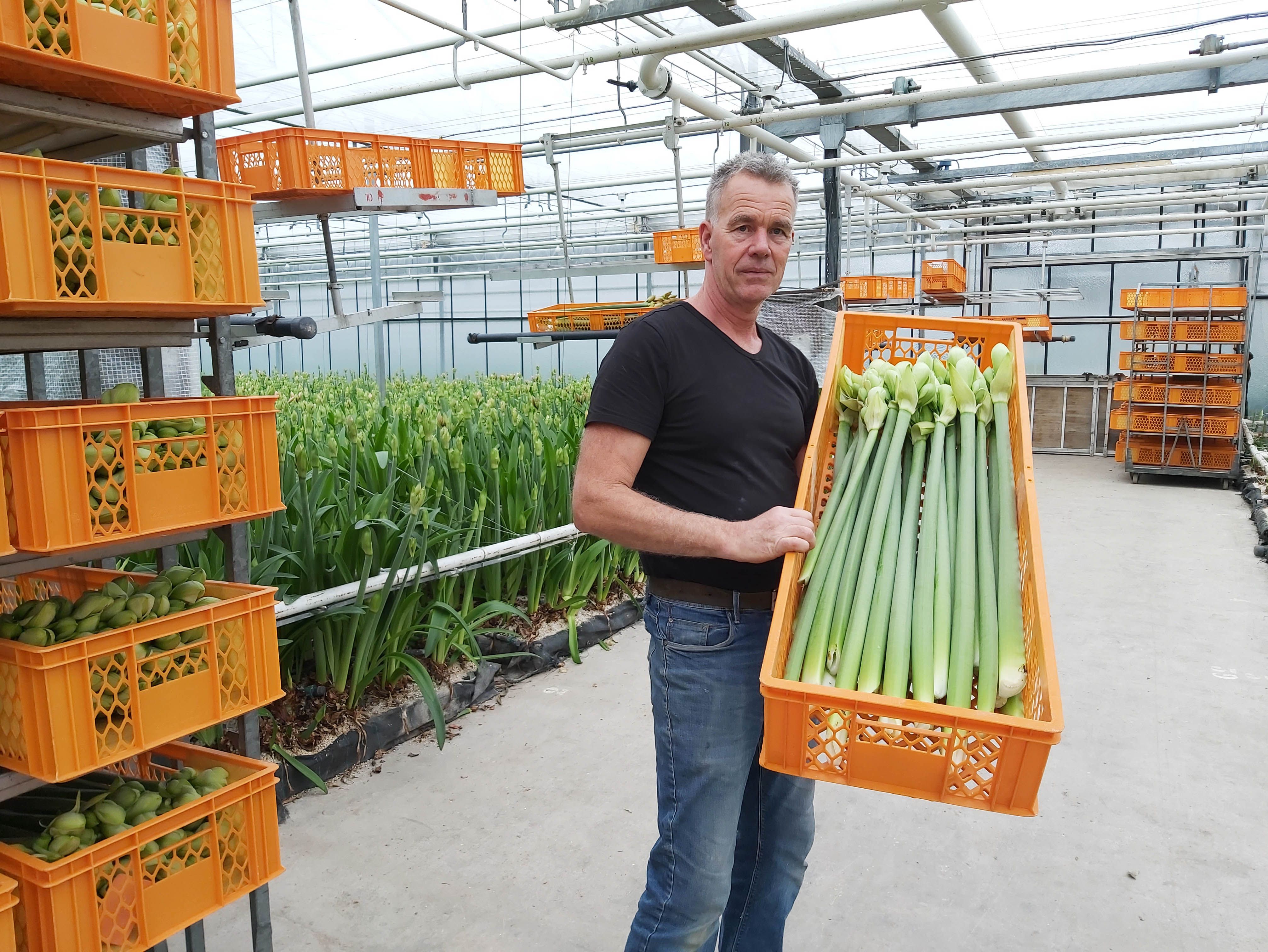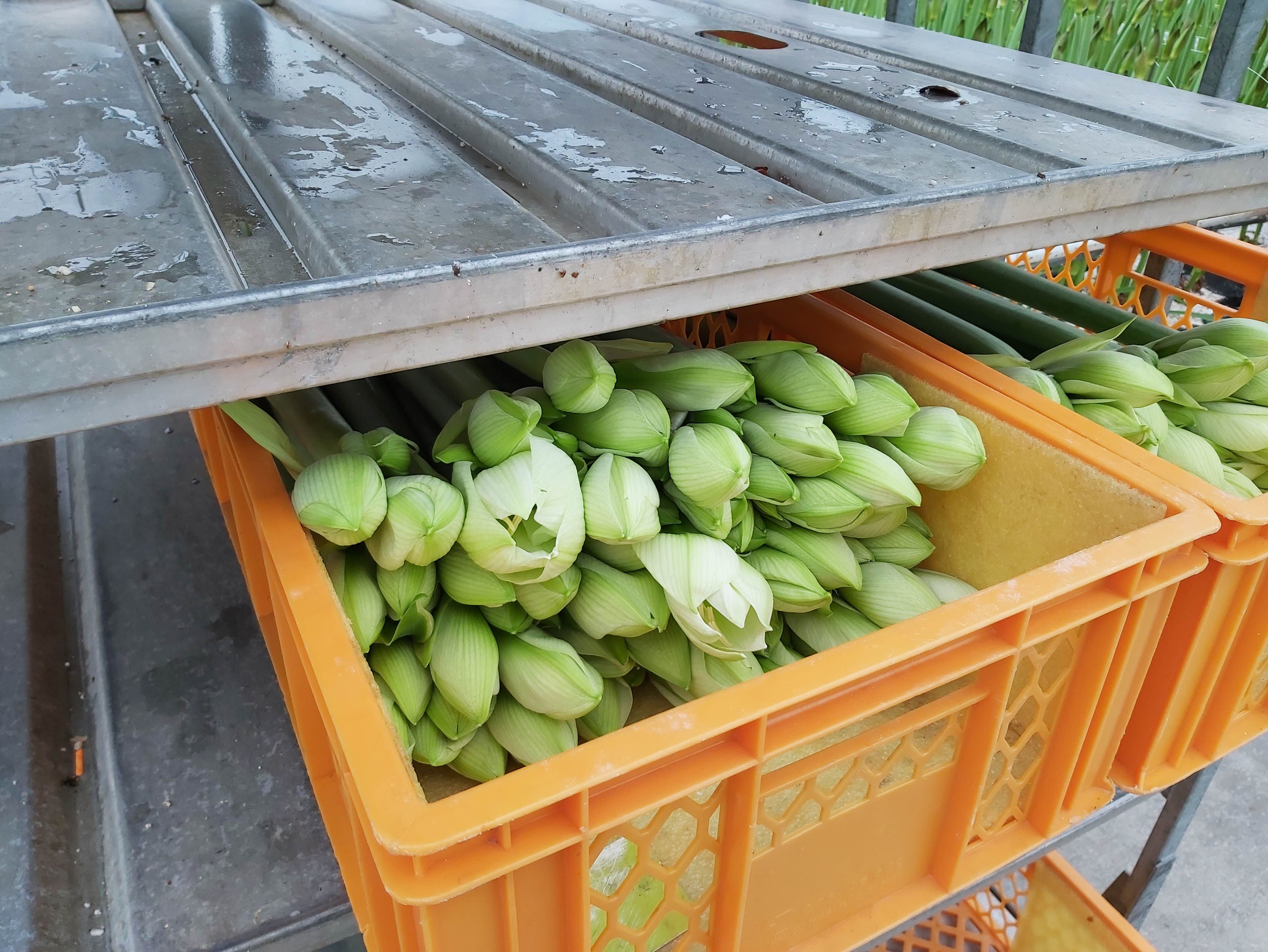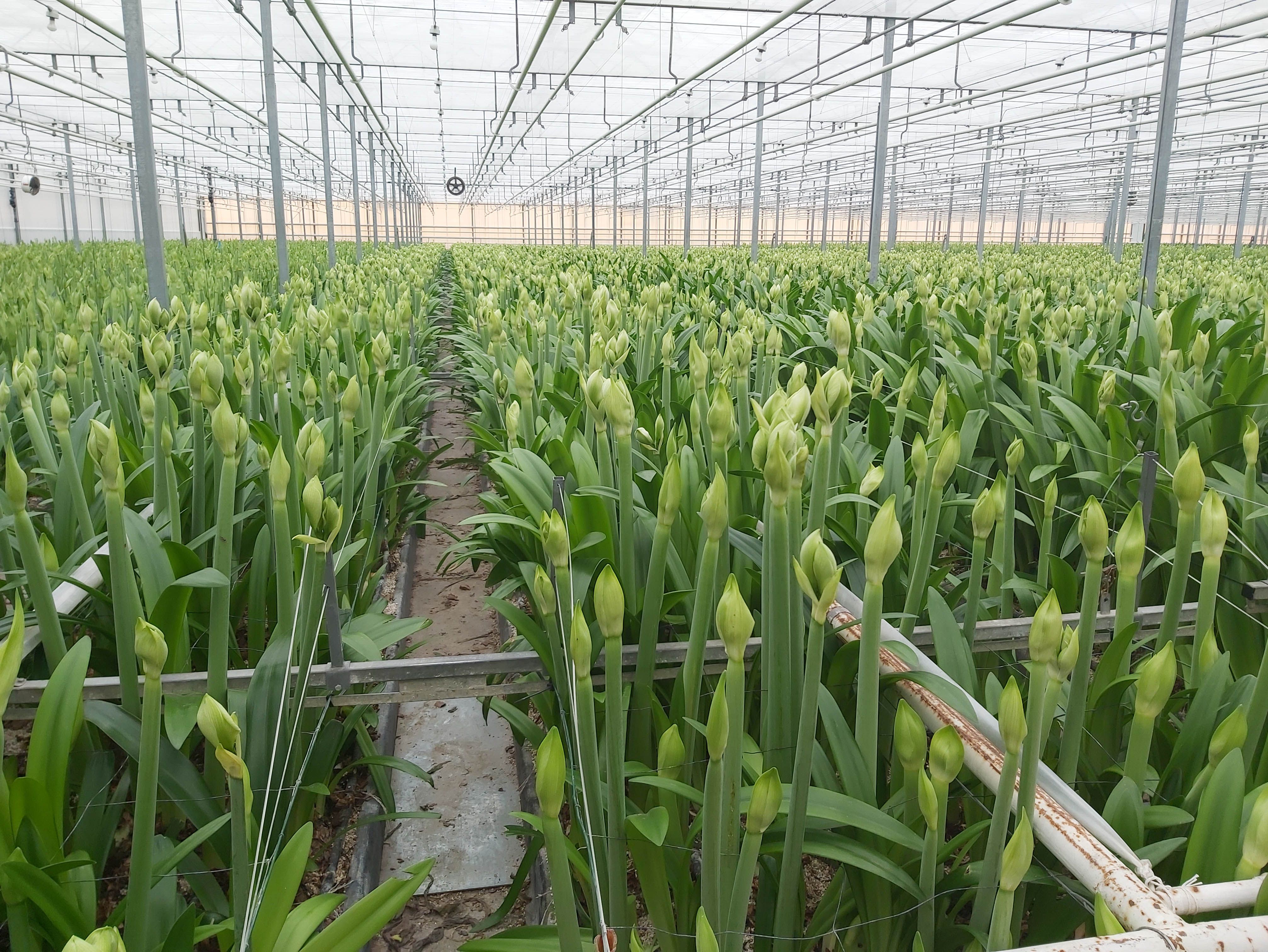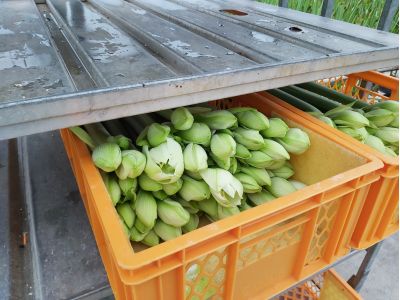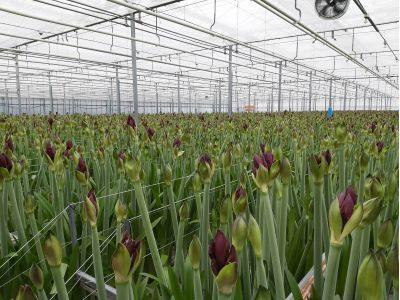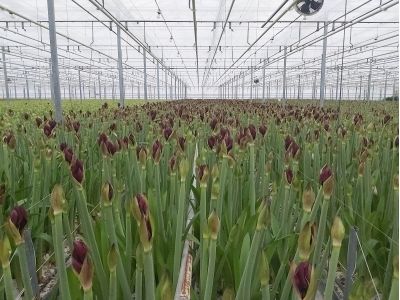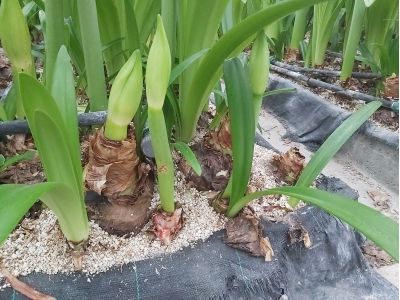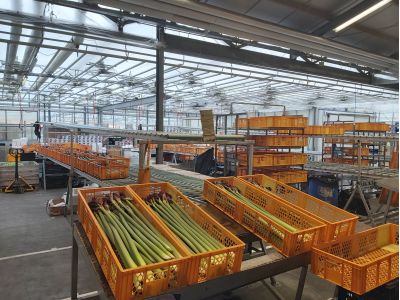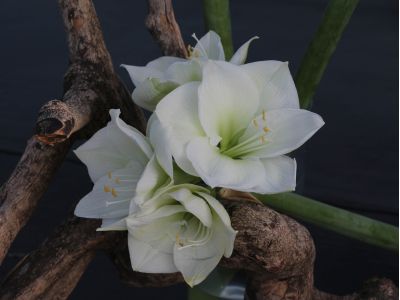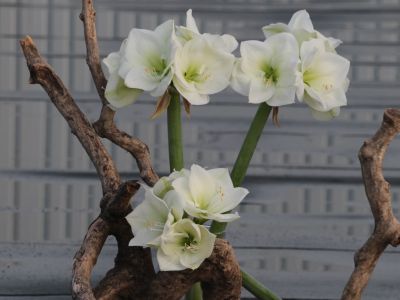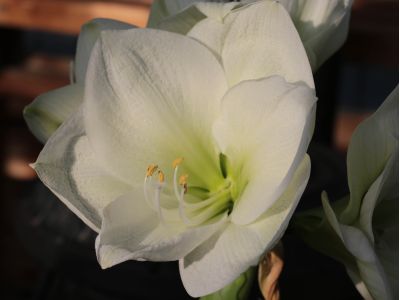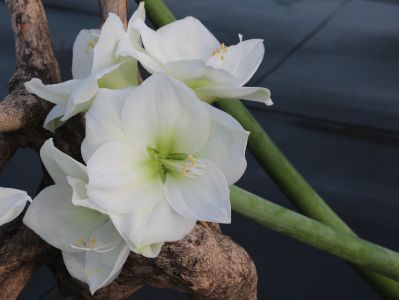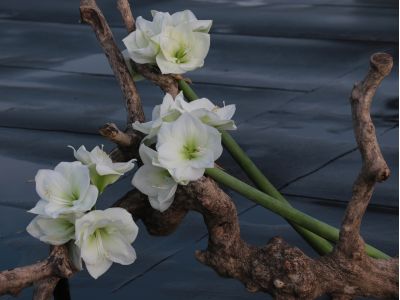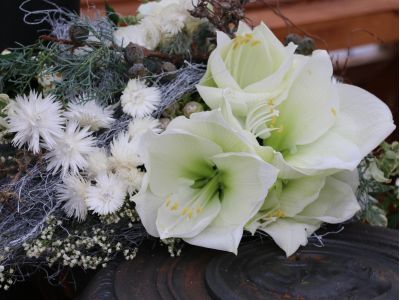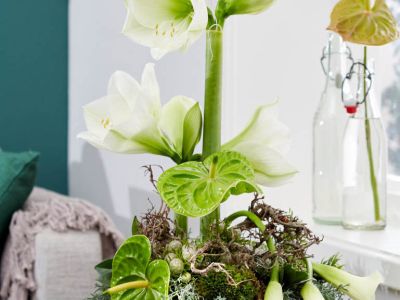Hippeastrum White Sensation
In the spotlights
The first Christmas songs can already be heard on the radio and the stores have all been transformed with Christmas decorations. So naturally, florists can no longer do without the Amaryllis in their assortment. At the FloraPodium we were introduced to Hippeastrum White Sensation, an impressively large, white amaryllis. We visited grower Frans Kouwenhoven, who in the busiest period of the year, took the time to tell us everything about this impressive appearance.
Vegetable grower
Frans was originally a vegetable grower, but when this sector was confronted with an increase in scale, it became more attractive for Frans to look for another crop. In addition, his location at the time was actually more suitable for floriculture. In 1994 he switched to the cultivation of the Amaryllis. Frans finds it a very beautiful product and his brother used to grow Amaryllis, which motivated him to pick up this crop.
Spotlights
The name "White Sensation" was invented by Frans himself. The species is protected and is only grown by two growers. So it is also extremely exclusive! We were very impressed with the crop when we walked through the greenhouse. The bulbs are large, the stems are thick and the buds are huge.
The presentation of the flower is unique. She distinguishes herself by her really white flowers and beautiful round petal. In addition, there are many types of Amaryllis that droop a little when they are open, but White Sensation keeps her head up when she blooms. The stem is also extremely strong and breaks much less than other varieties. The vase life itself is also very good!
Crushed stems on the vase
We asked Frans what you can do at home to prevent the stem from breaking. The main reason that this happens is actually a dirty vase, causing bacterial growth in the stem. So a clean vase is the solution.
But it all starts with the grower, who can already make a contribution. The strongest flowers are cut at three to four weeks. The late bloomers, which are cut at a later moment, would benefit from being cut shorter and are more suited for using in bouquets according to Frans. They have received less light, making the stem weaker and shorter.
In recent years, enormous steps have been taken to keep the flowers in optimal condition during transport. All amaryllis boxes are coated on the inside with a kind of plastic. This keeps moisture in the box instead of letting it being soaked up by the cardboard. After cutting, the stems are sprinkled with water. The stems must be packed with a little moisture so that the freshness in the box stays better.
Popular with Christmas
This hip flower is extremely popular, especially for Christmas. Red and white are popular colors in these days and the Amaryllis is the perfect choice for that color scheme. In addition, the styling options are endless; both with the flower but also as a bulb this flower is very decorative.

The cultivation
Frans cuts the amaryllis much more mature than most growers. Contrary to what most people think, you can work with the flower much longer this way. The stem has received much more nutrients from the bulb, making the shelf life much better.
If the flower is cut too raw, it takes much longer before they open, and often they do not open at all and the vase life is much shorter. In addition, the flower already has some color, so you see what you buy.
Time consuming
Cutting the flowers at a riper stage is actually not beneficial for the company. Harvesting takes much longer, just like processing. If the stems are rawer, you can grab several stems at the same time. Because the stems are riper, the bud is much more fragile and must be processed and packed per stem.
But Frans finds the quality of his products so important that he likes to make up for the "delay" in the labor process.
Double scales
Frans grows his bulbs himself. He does this by means of "double scales". The top and bottom are cut off from the bulb, then the remaining bulb is cut into segments. You can compare the inside of an Amaryllis with an onion, it is made up of layers called "skirts". From these segments, "double scales" are cut, so there are actually two layers, where it is important that there is a piece of the bottom part of the bulb still attached to it. About 50 to 80 pieces can be cut from one large bulb.
These double scales are packed and stored in the moist vermiculite at around 30 degrees. After three to six months new small bulbs appear between the skirts. The small bulbs are planted with 75 to 100 pieces on a m2.
After ten to eleven months, the bulb has a circumference of 12 to 20 cm and is removed from the ground. In February they go back into the ground, so that they are in bloom that same year around Christmas.
This entire process from the double scales to the first harvest takes approximately 2.5 years. It depends on the cultivar how many buds the flower generates in the first year.
Leaf production
After the harvest, the leaves start to grow, which is necessary for the plant to develop new buds for the following year. When the leaf is removed, the bulb temperature is lowered to 13 degrees Celsius. This is done by allowing cold water (6 degrees C) to flow through the hoses that lie on the bottom of the beds. After 10 weeks, hot water is pumped through the hoses, causing the bulb temperature to rise to 21 degrees. Each can be controlled separately, so that Frans can influence the production of his crop.
The bulb can flower 2 to 3 times in the same sport, after which they need to be removed because the quality decreases.
The roots are then removed from the bulb, this is called "soling". The bulb is dried and receives a warm water treatment of 47 degrees Celsius. After a month the bulb is replanted again.
In this month, the substrate in which the bulb grows must be steamed and cleaned. The bulbs that have failed must be replaced by new ones.
Own species
In addition to White Sensation, Frans has two other varieties, Loyalty Queen Silvia and Britney. There are two more species in the lab that will generate the first bulbs next year. Frans is looking for species that someone else does not have. He wants to stay exclusive, cultivate a smaller variety and make it a success!
FloraPodium, 12 December 2019






